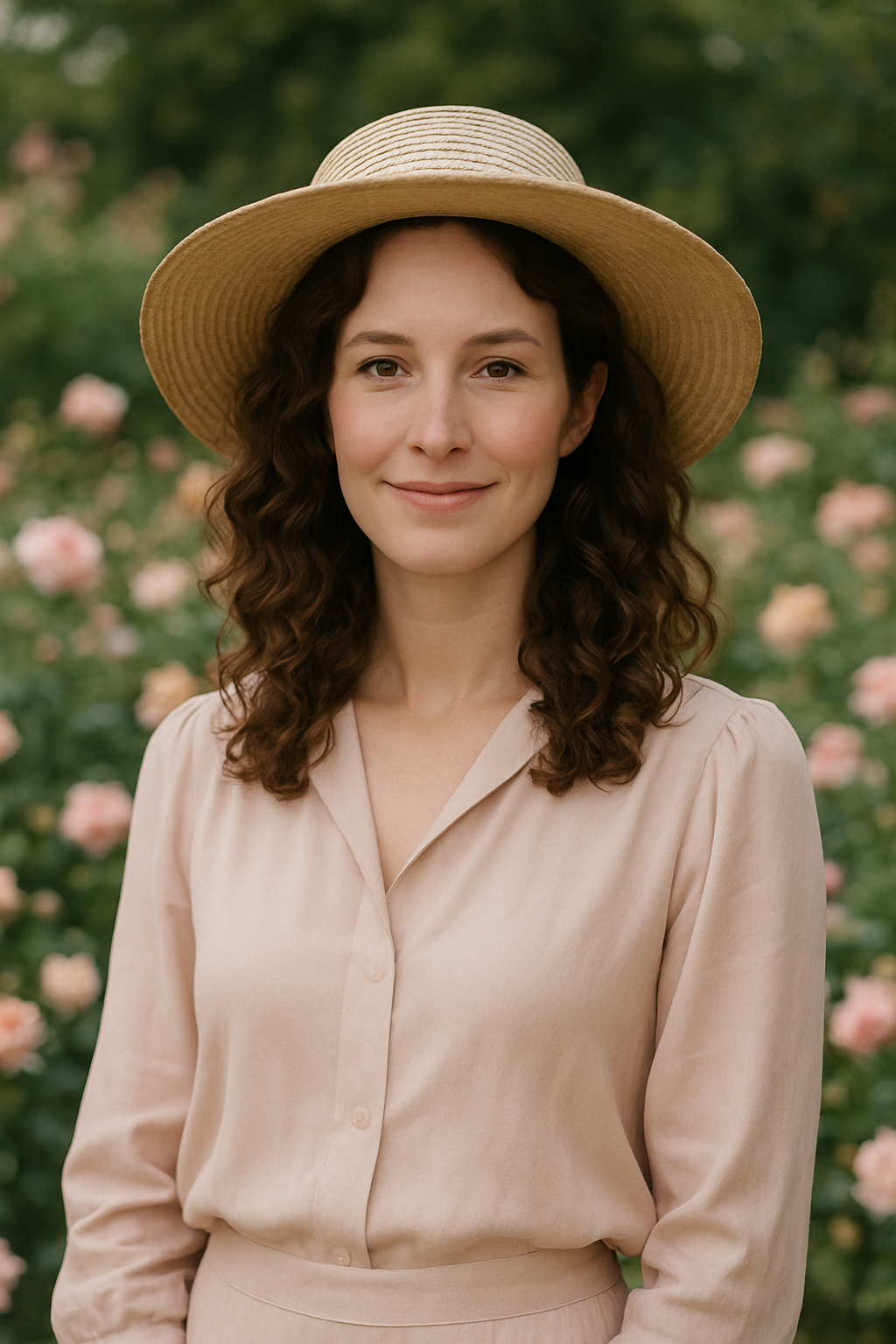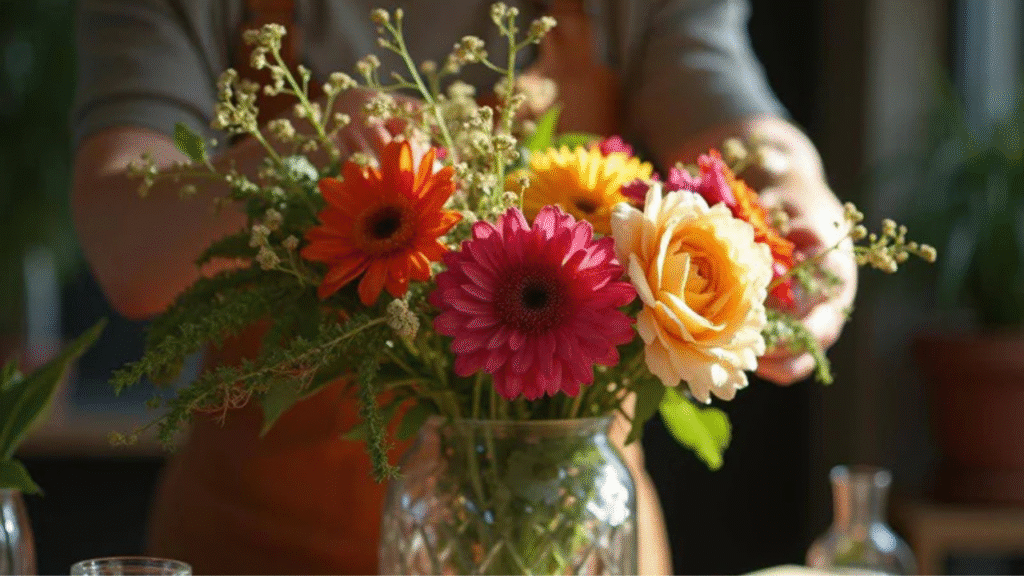
If you’ve ever dreamed of bringing the beauty of your garden indoors or gifting a heartfelt arrangement, learning how to build a bouquet with cut flowers is a truly rewarding skill.
I’m Flora Lane, and over the years, I’ve poured my heart into cultivating cut flowers that brighten homes and hearts alike. Today, I want to share with you my step-by-step approach to crafting stunning bouquets—even if you’re just starting out. Whether you have a sprawling garden or a small windowsill patch, building a bouquet from your own cut flowers connects you to nature in a deeply personal way. Let’s dive in, so you can confidently create bouquets that tell your unique floral story.
Understanding the Basics of How to Build a Bouquet with Cut Flowers
Before we get into the hands-on process, it’s important to understand the foundational elements of bouquet building. Knowing the anatomy of a bouquet helps you design arrangements that are balanced, beautiful, and long-lasting.
Anatomy of a Bouquet
- Focal Flowers: These are the stars of your bouquet—the large, showy blooms that draw the eye.
- Filler Flowers: Smaller blooms or buds that add texture and volume without stealing the spotlight.
- Foliage: Leaves and greenery that add structure, depth, and a natural backdrop.
- Stem Length: Ideally, stems should be trimmed so the bouquet fits comfortably in your chosen vase.
- Color Palette: Harmonizing colors or contrasting hues can completely change the vibe of your arrangement.
Choosing the Right Flowers for Your Bouquet
Selecting flowers is one of the most joyful parts of building a bouquet. Here’s what I focus on when choosing my blooms:
Popular Cut Flowers and Their Characteristics
*Availability may vary by region or season.
| Flower Type | Bloom Time | Sunlight Needs | Vase Life (Days) | Ideal Use in Bouquet |
|---|---|---|---|---|
| Zinnias | Summer–Fall | Full Sun | 5–7 | Focal or filler |
| Dahlias | Summer–Fall | Full Sun | 7–10 | Focal |
| Snapdragons | Spring–Fall | Full Sun | 6–8 | Filler |
| Larkspur | Spring–Summer | Full Sun | 5–7 | Tall filler |
| Roses | Year-round* | Partial Shade | 7–10 | Focal |
| Bells of Ireland | Summer | Full Sun | 5–7 | Unique filler |
| Eucalyptus | Year-round* | Full Sun | 10+ | Foliage |
Tips for Choosing Flowers
- Pick flowers that bloom at the same time for freshness.
- Mix different shapes and sizes for visual interest.
- Include some greenery for texture and balance.
Step-by-Step Guide: How to Build a Bouquet with Cut Flowers
Now that you have your flowers and foliage ready, let’s create your bouquet!
1. Prepare Your Stems

- Remove lower leaves that will sit below the waterline to prevent bacterial growth.
- Trim stems diagonally with sharp scissors or pruners for better water absorption.
- Hydrate flowers by placing them in clean water for at least an hour before arranging.
2. Start with the Foliage Base
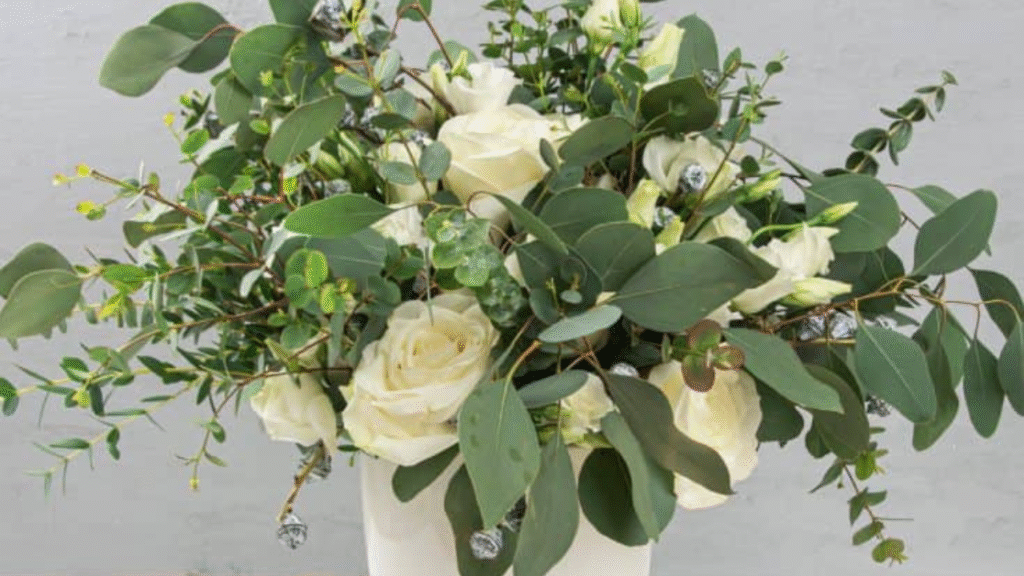
Begin by gathering a handful of greenery to form the bouquet’s structure. This base helps hold the flowers in place and creates a lush backdrop.
3. Add Your Focal Flowers
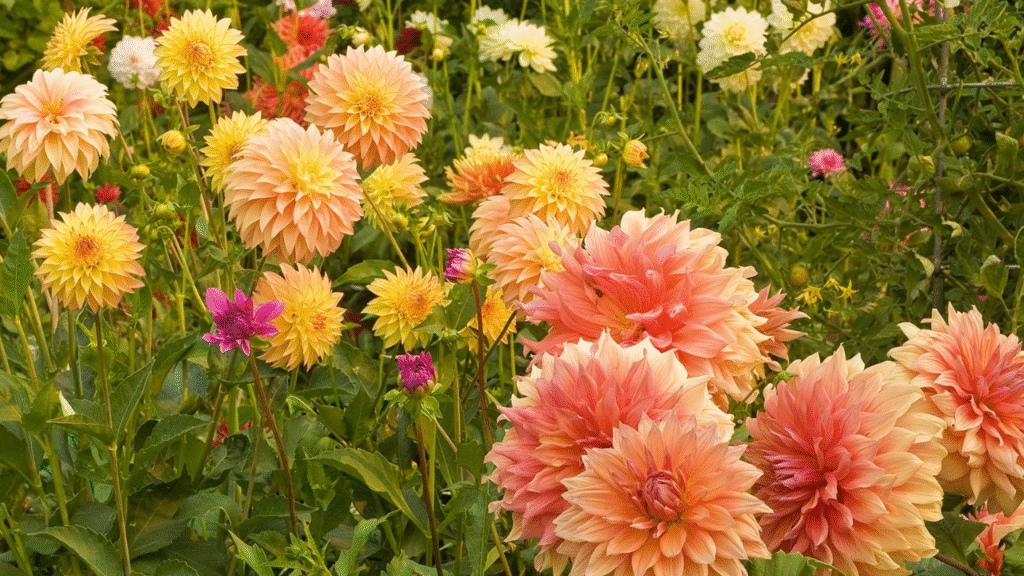
Place your largest blooms evenly around the bouquet. Keep turning the bouquet as you add flowers to maintain balance.
4. Fill Gaps with Smaller Flowers and Filler
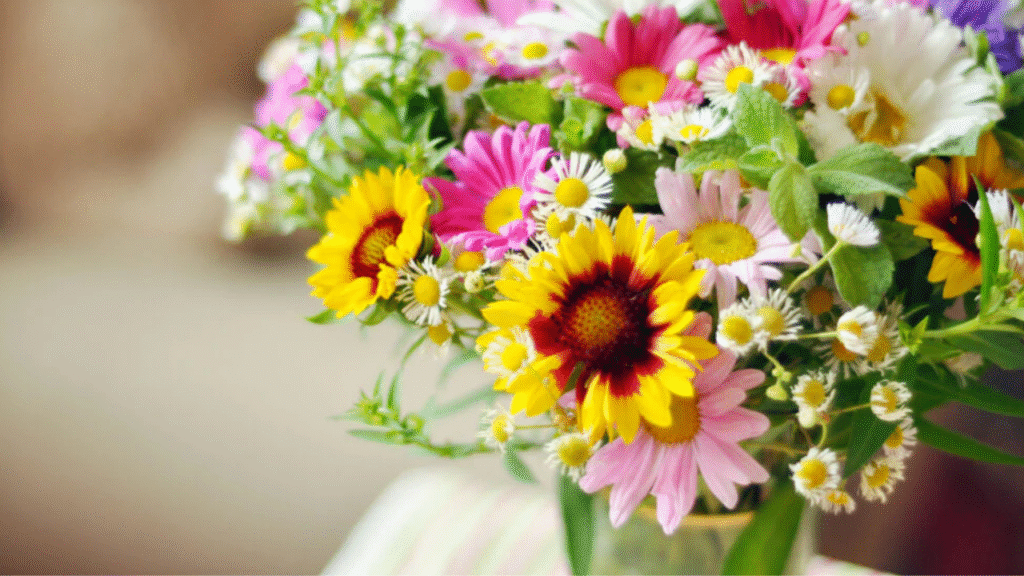
Insert filler blooms like snapdragons or Bells of Ireland to add volume and soften the arrangement.
5. Adjust and Secure
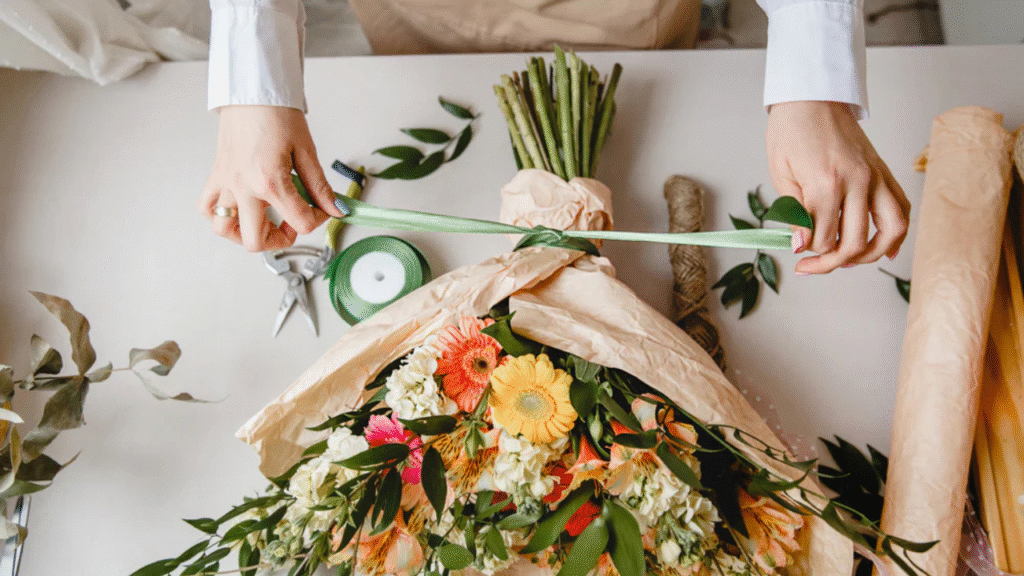
Hold the bouquet gently but firmly. Rotate it to check for evenness and adjust flower placement as needed. When satisfied, wrap the stems tightly with floral tape or twine to keep everything together.
6. Final Trim and Vase Placement
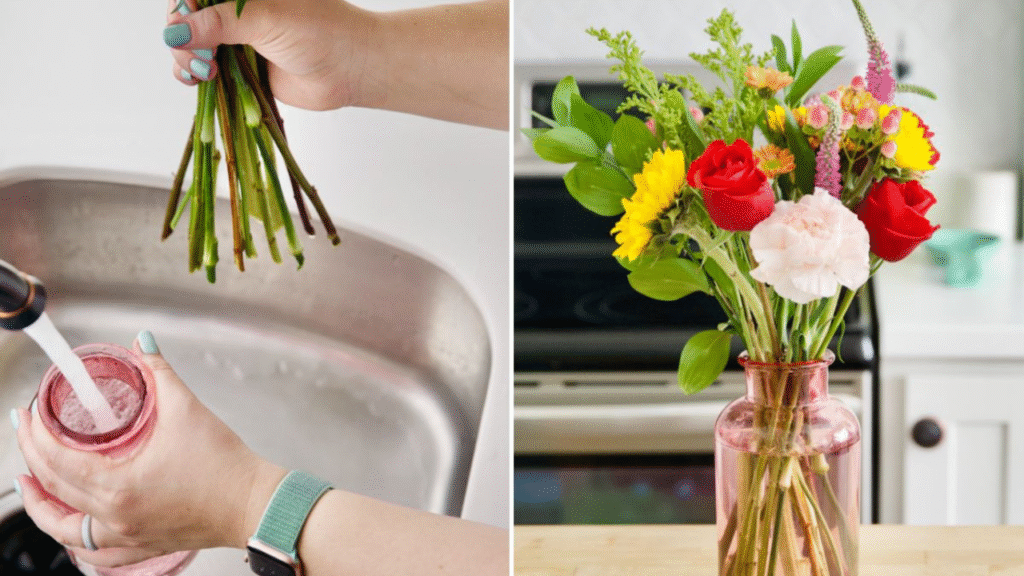
Cut stems to fit your vase, ideally leaving about 6-8 inches in length. Place your bouquet in fresh, clean water with flower food if available.
Practical Tips for Long-Lasting Bouquets
- Change the water every 2 days.
- Re-cut stems every few days to help flowers absorb water.
- Keep bouquets away from direct sunlight, heat sources, and fruit (which emits ethylene gas that ages flowers).
- Use a clean vase to avoid bacteria buildup.
Why Foliage is the Secret to Fabulous Bouquets
I can’t stress enough how much greenery transforms a bouquet. Foliage like eucalyptus, mint, or lemon balm adds freshness and texture, making your arrangement feel alive and natural. It also helps fill space without overwhelming the flowers.
My Favorite Foliage for Bouquets
- Eucalyptus: Its dusty green leaves are fragrant and elegant.
- Mint: Adds a lovely scent and bright green texture.
- Lemon Balm: Provides a fresh citrus aroma and soft leaves.
- Bupleurum: Adds airy, delicate clusters.
Common Challenges and How to Overcome Them
Flower Wilt or Drooping
- Always hydrate flowers thoroughly before arranging.
- Avoid overcrowding stems to ensure airflow.
Uneven Bouquet Shape
- Rotate your bouquet as you build it.
- Step back frequently to see the overall shape.
Conclusion: Your Floral Journey Starts Here
Building a bouquet with cut flowers is more than just arranging blooms—it’s a chance to connect with nature’s beauty and express your creativity. Remember, every bouquet tells a story, and yours is uniquely beautiful. Take your time, enjoy the process, and don’t be afraid to experiment with colors and textures. I’m cheering you on every step of the way!
FAQs About How to Build a Bouquet with Cut Flowers
Q1: How often should I change the water in my bouquet vase?
Change the water every two days and re-cut the stems to keep your flowers fresh longer.
Q2: Can I use flowers from my garden that aren’t traditionally cut flowers?
Absolutely! Many garden flowers can be used in bouquets. Just ensure they have sturdy stems and a decent vase life.
Q3: How do I know when to cut flowers for the best vase life?
Cut flowers early in the morning when they’re fully hydrated but before they’re fully open. This helps them last longer in your bouquet.

